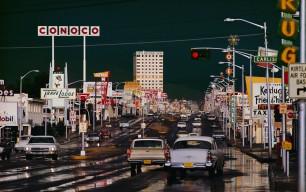In 2007, the Whole Foods supermarket chain built one of their largest stores on New York City’s storied Lower East Side, occupying an entire block of East Houston Street from the Bowery to Chrystie Street. For the well-off, the abundant availability of high-quality organic foods was a welcome addition, but for the majority of locals, many of whom had roots going back generations to New York’s immigrant beginnings, the scale of the new store, selling wares that few of them could easily afford, was a symbolic affront to the traditions of this part of the city.
When I conducted research at the site in 2011, my interest was more pedestrian: how did this megastructure – plopped into a neighbourhood populated with tiny bars and restaurants, bodegas, pocket parks, playgrounds and many different styles of housing – influence the psychological state of the urban pedestrian? What happens inside the minds of city-dwellers who turn out of tiny, historic restaurants with bellies full of delicious knish and encounter nothing but empty sidewalk beneath their feet, a long bank of frosted glass on one side, and a steady stream of honking taxicabs on the other?
[For more of this story, written by Pam Weintraub, go to http://aeon.co/magazine/cultur...r-stressed-citizens/]




Comments (0)